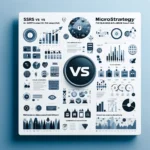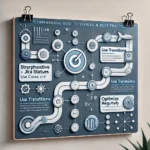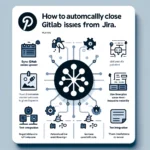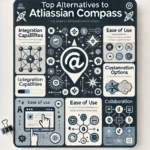APIs (Application Programming Interfaces) play a crucial role in enabling seamless communication between different systems and applications. As businesses increasingly rely on APIs to integrate services and enhance functionality, the importance of effective API testing cannot be overstated. The API testing field is experiencing rapid advancements, driven by technological innovations and changing industry demands. This blog post explores the future of API testing, highlighting key trends to watch in 2024 and beyond.
Key Trends in API Testing
1. Shift-Left Testing
Shift-left testing refers to the practice of moving testing activities earlier in the development process. Traditionally, testing was conducted towards the end of the development cycle, leading to late-stage bug discoveries and increased costs. The shift-left approach involves integrating testing into the development phase, allowing for earlier detection and resolution of issues.
In 2024, shift-left testing will become even more prevalent. Developers will increasingly incorporate API testing tools and practices during the design and coding stages. This proactive approach will help identify and address potential issues early, improving overall software quality and reducing time-to-market.
Key Benefits:
- Early detection of bugs
- Reduced development costs
- Faster time-to-market
2. AI and Machine Learning Integration
Artificial Intelligence (AI) and Machine Learning (ML) are transforming various aspects of software development, and API testing is no exception. AI and ML technologies are being integrated into API testing tools to enhance test automation, analysis, and optimization.
AI-powered API testing tools can intelligently generate test cases based on historical data, user behavior, and application changes. Machine learning algorithms can analyze test results to identify patterns and anomalies, enabling more accurate and efficient testing processes. These advancements will lead to smarter and more adaptive testing strategies in 2024 and beyond.
Key Benefits:
- Intelligent test case generation
- Enhanced test result analysis
- Adaptive testing strategies
3. Increased Emphasis on Security Testing
As APIs become more integral to modern applications, the need for robust security testing is growing. API security vulnerabilities can expose sensitive data and lead to severe consequences for organizations. In 2024, there will be a heightened focus on security testing for APIs to mitigate risks and ensure compliance with industry standards.
Organizations will adopt advanced security testing techniques, such as penetration testing, vulnerability scanning, and threat modeling, to identify and address potential security issues. Additionally, the integration of security testing into the CI/CD (Continuous Integration/Continuous Deployment) pipeline will become standard practice.
Key Benefits:
- Protection of sensitive data
- Compliance with industry standards
- Prevention of security breaches
4. API Testing in a Microservices Architecture
The adoption of microservices architecture continues to rise, with many organizations breaking down monolithic applications into smaller, loosely coupled services. This approach offers greater flexibility and scalability but introduces new challenges for API testing.
In a microservices environment, testing individual APIs and their interactions becomes more complex. Testing strategies will need to evolve to address issues such as service dependencies, network latency, and data consistency. In 2024, there will be a growing focus on developing specialized tools and techniques for effective API testing in microservices architectures.
Key Benefits:
- Improved flexibility and scalability
- Better management of service dependencies
- Enhanced data consistency
5. Enhanced Test Automation
Test automation has been a staple in API testing for years, but its importance will continue to grow in 2024. Automation enables faster and more reliable testing processes, reducing manual effort and increasing coverage.
The future of test automation will involve more sophisticated tools and frameworks that support diverse testing scenarios, including performance, security, and integration testing. Additionally, the integration of test automation with other DevOps practices, such as continuous testing and continuous integration, will become more prevalent.
Key Benefits:
- Faster and more reliable testing
- Increased test coverage
- Seamless integration with DevOps practices
6. API Testing for Internet of Things (IoT)
The Internet of Things (IoT) is rapidly expanding, with a growing number of connected devices generating vast amounts of data. API testing for IoT applications will become increasingly important in 2024, as these applications often involve complex interactions between devices, cloud services, and APIs.
Testing IoT APIs requires addressing unique challenges, such as varying device capabilities, network conditions, and data formats. In the coming years, there will be a greater emphasis on developing testing strategies and tools tailored to the needs of IoT applications.
Key Benefits:
- Improved reliability of IoT applications
- Better management of device interactions
- Enhanced data accuracy and consistency
7. API Testing for Serverless Architectures
Serverless computing is gaining traction as organizations seek to reduce infrastructure management and scale applications more efficiently. In a serverless architecture, APIs are often used to interact with serverless functions and services.
API testing in serverless environments presents unique challenges, such as testing stateless functions and managing event-driven interactions. In 2024, there will be a growing focus on developing testing strategies and tools specifically designed for serverless architectures.
Key Benefits:
- Efficient testing of serverless functions
- Better management of event-driven interactions
- Improved application scalability
FAQs
Q1: What is shift-left testing, and why is it important for API testing?
A1: Shift-left testing involves integrating testing activities earlier in the development process. For API testing, this means conducting tests during the design and coding phases rather than waiting until the end of development. It is important because it allows for early detection of issues, reduces development costs, and accelerates time-to-market.
Q2: How does AI and machine learning enhance API testing?
A2: AI and machine learning enhance API testing by enabling intelligent test case generation, improved test result analysis, and adaptive testing strategies. AI-powered tools can analyze historical data and user behavior to create relevant test cases, while machine learning algorithms can identify patterns and anomalies in test results.
Q3: Why is API security testing becoming more important?
A3: API security testing is crucial because APIs can expose sensitive data and vulnerabilities that could lead to security breaches. As APIs become more integral to applications, ensuring their security through techniques like penetration testing and vulnerability scanning is essential to protect data and maintain compliance.
Q4: What are the challenges of API testing in a microservices architecture?
A4: API testing in a microservices architecture involves managing complex service interactions, dependencies, and network latency. Testing strategies must account for these factors to ensure that APIs work correctly within the larger system and maintain data consistency across services.
Q5: How is test automation evolving in API testing?
A5: Test automation is evolving with more sophisticated tools and frameworks that support diverse testing scenarios, including performance, security, and integration testing. The integration of test automation with DevOps practices, such as continuous testing and continuous integration, is also becoming more common.
Q6: What unique challenges does API testing for IoT applications face?
A6: API testing for IoT applications involves addressing challenges such as varying device capabilities, network conditions, and data formats. Effective testing strategies must account for these factors to ensure the reliability and accuracy of IoT applications.
Q7: How does API testing differ in serverless architectures compared to traditional environments?
A7: In serverless architectures, API testing must account for stateless functions and event-driven interactions. Testing strategies and tools need to be adapted to handle these unique characteristics and ensure that serverless functions and APIs work correctly within the serverless environment.
Conclusion
The future of API testing is set to be shaped by several transformative trends, including shift-left testing, AI and machine learning integration, enhanced security testing, and advancements in test automation. As organizations continue to embrace new technologies and architectural paradigms, API testing will need to evolve to address emerging challenges and opportunities. By staying informed about these trends and adopting innovative testing practices, businesses can ensure the reliability, security, and performance of their APIs in 2024 and beyond.






